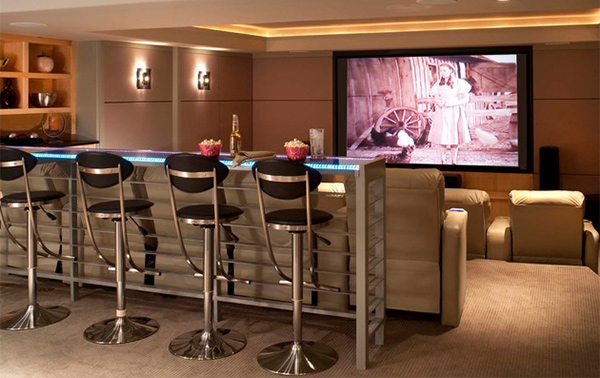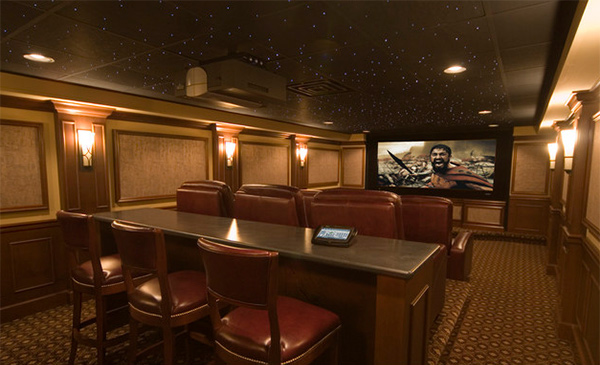


The back bar is what typically comes to mind when you imagine a traditional style bar. There are four broad styles of bar to choose from:
#Media room bar full#
Whether you build a bar extension in your kitchen or create a full bar in your den, man cave, or basement, the bar should follow lines of the room and be kept to scale so as not to overwhelm the space. The style of bar you choose for your home should blend naturally with the décor of the room. The material is also manufactured to last an entire lifetime. HDPE lumber is a favorite among homeowners as it makes home bars comfortable, luxurious, and stylish with a strong, high quality, and sturdy construction. Its only downside is its vulnerability to wind from its lightweight construction.Ĭonsider HDPE lumber if you want a material that only needs water and dish soap for its maintenance. Wicker is light and beautiful with its texture, but it is not durable for outdoor use.Īluminum, on the other hand, is easy to maintain, resilient, and tough. They also don't resist spills.Īs for hardwood, it’s durable and resilient, but requires protection and varnishing to stay outside. Softwoods are inexpensive as they're abundant in supply, but they don't weather well. Take into account the following factors if you want to choose the right material(s): maintenance, durability, appearance, comfort, surfaces (how well the surfaces can resist foods and drinks), weight, comfort, and price. They're ornate, lockable cabinets, which safely conceal your home bar with shelves, racks, worktop counters, and drawers.īars and bar sets are currently available in various materials – hardwoods like teak and oak, softwoods like pine, HDPE lumber, aluminum, and wicker are all available.
#Media room bar free#
When it's not used, the sides are folded away to free up more space. The bar's sides open out to extend and create a home bar of the standard size. Folding bars - Folding bars are great space-saving options for family rooms, which double as venues for parties and gatherings.Because of their small size, they’re more of decorative features rather than complete mini home bar solutions. They're best used in rooms where floor space is limited. Corner bars - Traditional back bars modified result to corner bars, which are made to sit in corners of rooms rather than being placed against walls.Built-in back bars paired with front bars create that traditional clubhouse feel perfect for traditional homes or cabins. They're often paired with back bars, which consist of shelves that are used for displaying and storing liquor, storage cabinets, and countertops. Straight bars or front bars - On one side, these bars accommodate the host while the guests are on the other.


 0 kommentar(er)
0 kommentar(er)
